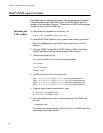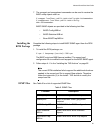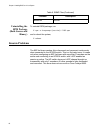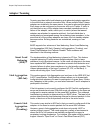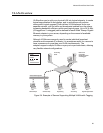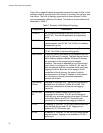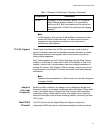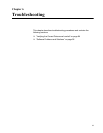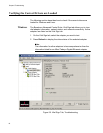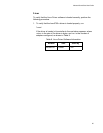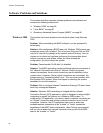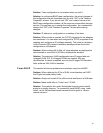
Chapter 5: Key Protocols and Interfaces
90
Figure 34 on page 89 shows an example network that uses VLANs. In this
example network, the physical LAN consists of a switch, two servers, and
five clients. The LAN is logically organized into three different VLANs,
each representing a different IP subnet. The features of this network are
described in Table 7.
Table 7. Example VLAN Network Topology
Component Description
VLAN #1 An IP subnet consisting of the Main Server, PC #3,
and PC #5. This subnet represents an engineering
group.
VLAN #2 Includes the Main Server, PCs #1 and #2 via shared
media segment, and PC #5. This VLAN is a software
development group.
VLAN #3 Includes the Main Server, the Accounting Server and
PC #4. This VLAN is an accounting group.
Main Server A high-use server that needs to be accessed from all
of the VLANs and IP subnets. The Main Server has an
Allied Telesyn adapter installed. All three IP subnets
are accessed via the single physical adapter
interface. The server is attached to one of the switch
ports, which is configured for VLANs #1, #2, and #3.
Both the adapter and the connected switch port have
tagging turned on. Because of the tagging VLAN
capabilities of both devices, the server is able to
communicate on all three IP subnets in this network,
but continues to maintain broadcast separation
between all of them.
Accounting
Server
Available to VLAN #3 only. The Accounting Server is
isolated from all traffic on VLANs #1 and #2. The
switch port connected to the server has tagging
turned off.
PCs #1 and
#2
Attached to a shared media hub that is then
connected to the switch. PCs #1 and #2 belong to
VLAN #2 only, and are logically in the same IP subnet
as the Main Server and PC #5. The switch port
connected to this segment has tagging turned off.
PC #3 A member of VLAN #1, PC #3 can communicate only
with the Main Server and PC #5. Tagging is not
enabled on PC #3’s switch port.
PC #4 A member of VLAN #3, PC #4 can only communicate
with the servers. Tagging is not enabled on PC #4’s
switch port.



